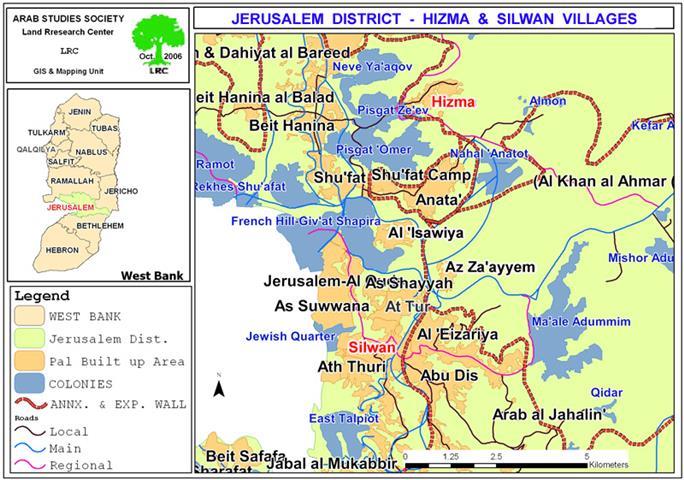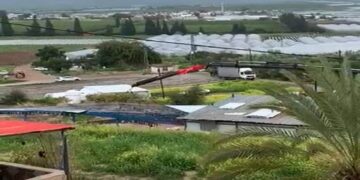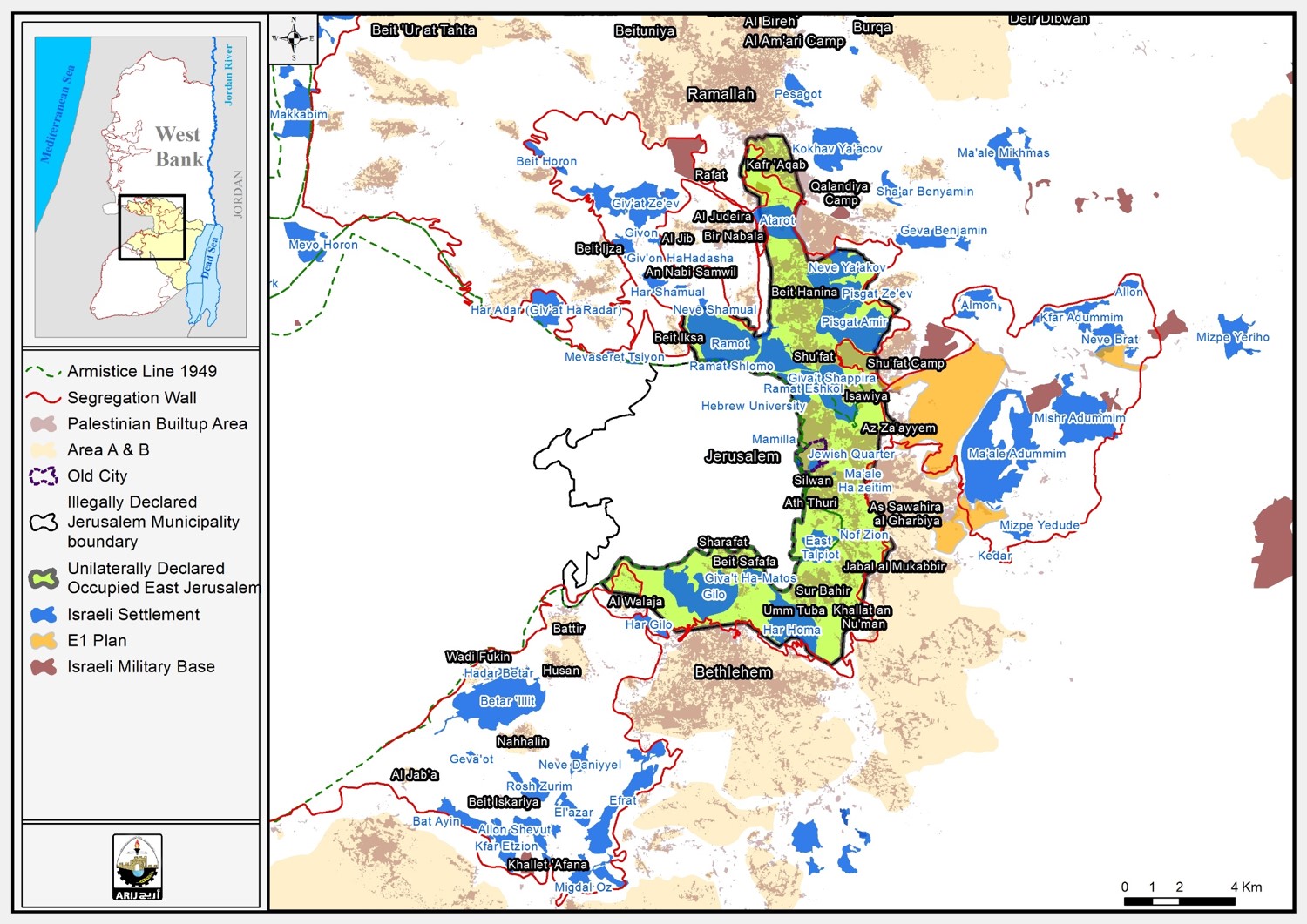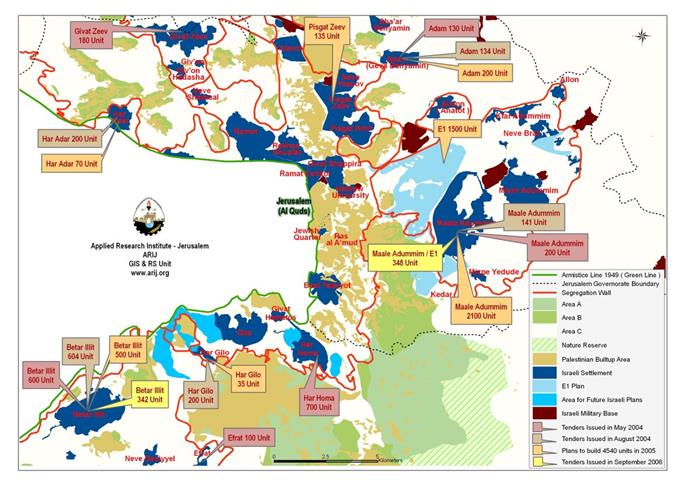The Israeli hunger for Palestinian lands has no limits. It is rarely that a day passes with the occupation carrying out a confiscation here or there directly or indirectly. Land confiscations can take place through written or advertised military orders. Sometimes this 'formal' procedure is bypassed and the land is confiscated without any prior warning or procedures. We say 'formal' with a bit of sarcasm because facts on the ground have proven that most, if not all, of the confiscation orders are cliché that is filled with legal loopholes and is usually published in marginalized newspapers with the goal of not reaching the victim. Other methods of 'informing' the victim of the pending confiscation include giving the written order to any member of the targeted community, a passerby or delivering it late to the village council (i.e. after the end of the time frame in which legal action can be taken against the relevant Israeli authority). Moreover, these orders are deliberately misleading as the name of the location, piece, or parcel are listed incorrectly as to increase the state of confusion among land owners. The occupation army has become professional in these tactics which are meant to deny the Palestinian landowners of any chance to get their confiscated lands back to their custody.
A New military gate at the entrance of the Israeli Segregation Wall west of the village of Hizma:
The Wall has devoured most of the lands of the village of Hizma whose lands used to be more than 18,000 dunums before the year 1948. Today, only 10328 dunums remained of which 644 dunums are built up area. There are 6,000 Palestinians currently living in the village.

Map 1: Hizma and Silwan, Jerusalem
Map prepared by LRC
Israeli occupation authorities have changed lately the road linking between Jaba, Hizma, Beit Hanina and the settlement of Pisgat Ze'ev to a new route that fits with the route of the Isolation Wall built on the lands of the village. The new route is planned to go through a military road established by the Israeli Ministry of Defense located only two meters away from the houses of the village.
Photo1: The Segregation wall at the western entrance to Hizma village, Jerusalem
The length of route of the Segregation Wall established on the lands of the village is about 5 kilometers with an average width of 60 meters leading to the confiscation of around 4318 dunums. That is in addition to 129 dunums located north of the old military checkpoint that was situated on the crossroads of Jaba �Hizma-Beit Hanina and the Abu George Road leading to Jericho. More than 5 housing units are trapped beyond the Wall in which more than 100 Palestinians are living. These houses belong to the following individuals:
-
Abdel Aziz Shihada Al Khateeb.
-
Ahmad Shihada Al Khateeb.
-
Mohammad Ibrahim Askar Al Khateeb.
-
Khayri Ibrahim Askar Al Khateeb.
-
Abdel Dayem Qasem Askar Al Khateeb.
Furthermore, the Jerusalem Occupation Municipality have demolished the house of Mr. Mohammad Suleiman Askar Al Khateeb after it destroyed the furniture, stole NIS 25,000 and caused the abortion of an unborn baby. It, also, confiscated the land, uprooted more than 500 trees and left the family homeless. All the above-mentioned tragedy was carried out under the pretext that the demolished house was located on the route of the Wall despite the fact that the house was built more than 20 years ago.
The Segregation Wall passes on 5 kilometers of the lands of the village starting from the Jaba' intersection in the north until it reaches the entrance of the village of Anata located south of the village. The construction of the Wall has led to massive damages to the lands of the two families in the village; Al Khateeb and Salah Al Dien.
Israeli Settlements:
Parts of the following Israeli settlements were built on the lands of the village ever since the beginning of the Israeli occupation back in 1967. These settlements are:
-
The settlement of Neve Ya'acov located northwest of the village.
-
The settlement of Pisgat Ze'ev located west and north of the village.
-
The settlement of Adam located to the north and northeast of the village in a location called Al Kou'. This settlement has expanded eastward when a road was constructed there to separate between the settlement and the village. In 2005, an outpost associated with the settlement was created in which between 6 and 8 caravans were placed. Olive trees were planted in that outpost after being supplied with water from the settlement of Adam. Israeli settlers inhabiting this outpost have made attacking Palestinian shepherds and landowners a habit. That is despite the fact that an Israeli court has issued an order to vacate the outpost. It is still there as of the time of writing this report. Lately, the settlement has expanded as a barbwire has been placed surrounding an additional 100 dunums of the villages' lands located in the eastern side of the settlement. Between now and then Israeli bulldozers work on the basic infrastructure of this location.
The municipality of occupied Jerusalem and Other governmental entities cooperate with El Ad in Silwan:
The Israeli Antiques Authority, financed by El Ad settlement movement, continues its digging operations in Wadi Hilwa location near Silwan Spring and its mosque. The site of the digging is owned by the Islamic Waqf. These operations are aimed at reaching a depth of more than 15 meters as to enable the Authority to establish a tunnel connecting between Ras Sbeitan and the Spring. The Committee for the Defense of the Lands and Estates of Silwan has indicated that Israeli settlers are planning to establish such a tunnel at a depth of 15-20 meters. Today, the reached depth is 12 meters.

(Photo 2 & 3: A scene of the diggings and tunnel in Silwan)
The illegal and irresponsible construction and digging work in the said location (considered to be an attack on the Waqf property) have caused major damage to the nearby kindergarten and mosque which threatens the lives of kindergarten children, worshippers and walkers as the digging is taking place on the main road of Al Bustan neighborhood.
Israeli media reports have indicated that Israeli governmental entities (specifically the Israeli Antique Authority and The Parks and Nature Authority) are conspiring with El Ad in this project as they provide their full support to it inside of the governmental circles. It was disclosed, too, that the Antiquity Authority is carrying out the digging with total funding from El Ad which is standing behind all of the operations aimed at taking hold of the estates of Palestinians in Silwan. It also finances the court cases that demand the eviction of Palestinians from their residence in the region of Wadi Hilwa and the historical Silwan Spring which is considered holy by Christians.
Photo 4: The threatened kindergarten in Silwan

Photo 5:The compound of Silwan spring
The connection between El Ad and a number of Israeli governmental entities in their continuous attacks on the Waqf properties in Jerusalem has become clear when the Planning Department at the Municipality of occupied Jerusalem sent a letter on April 2nd, 2006 to the manager of the Islamic Waqf in Jerusalem, Eng. Adnan Al Husseini, informing him with the decision to foreclose both the mosque and the kindergarten under the pretext that the two building are a source of 'immediate danger' to the residents and pedestrians !!!. This letter is a clear proof of the cooperation between El Ad and the Municipality; rather than holding El Ad responsible for its illegal and unauthorized digging action (which caused damage to the said buildings), the Municipality placed the responsibility squarely on the shoulder of Al Waqf whose property was damaged.
Photo 6: A copy of the aforementioned letter in Arabic
An earlier letter was sent by Eng. Husseini to the relevant Israeli authorities in January 2005 in which he stressed that Israeli settlers' organizations are continuing digging operations in the vicinity of the mosque-kindergarten compound. He stressed that structural damage have taken place in the walls of the front yard of the mosque which leads to the old mosque affecting the historical value of the targeted locations. He added that 'the Silwan Spring in its entirety is an Islamic waqf for hundreds of years since the Caliph Othman Ibn Affan declared it as such in the first half of the 6 century AD. He also requested that 'Israeli authorities collecting fees at the entrance of the Spring' must stop this actions. Finally, he concluded that settler organizations working in the area are behaving as if they were above the law without any legal or moral ramifications for their actions.
Prepared by
The Land Research Center
LRC















